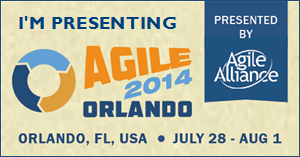Kanban Cards
Here are the cards for my "Holiday" Personal Kanban. My board doesn't go away after January 1. It just focuses on other stuff. The yellow cards are going to drop off after New Years. I left them on the board so you could see how we can have three groups on a board and it still have clarity. Colors of cards are optional. I use every visual queue I can, including blocked and high priority indicators.
Ready
I keep a backlog of stuff that isn't "ready" for me to work on so I don't even include those on my board. Even after having the highest priority cards appear at the top of the board, having too many cards on your board can paralyze you with choices. I only add cards to my ready column, if they have limited dependencies and are ready to complete within the next few weeks.
WIP (Work in Process)
One of the secrets of a pull system is you only work on things you actually have capacity to work on. When you have capacity in the next step of your workflow, you can pull work into that step. Limit the amount of stuff that you're working on at any given time and I can pretty much guarantee you'll get more done. Personally, I know that I can only deal with three things at a time before things start to get dropped. Know your personal limits and set them accordingly. If you're working on something and you get blocked, don't pull in more work. Add a visual indicator that indicates the item is blocked. and continue pulling working through to done. Once you unblock the work, you can pull it the rest of the way through your system.
Focus
I'm a strange combination of a little OCD, a little ADHD, a lot of grit, and a lot of drive. I need a focus column. If I walk away from my desk, read an email, or get a cup of coffee, I can pretty much guaranteed to forget what I was working on. The focus column is my visual reminder of that one thing I'm trying to focus on right now. Notice the image of my personal kanban above that I'm trying to wrap up this blog post. Everything else can wait. I need to get this done!
Done
Ah yes, the done column. It is where all work needs to go. When I look at it, it makes me feel pretty darn good. We all feel busy but we commonly ask ourselves if we've actually gotten anything done. Well, this will show you. I recommend you reflect on what you've accomplished, feel good about it, and clear the column on a periodic basis. I do it either once a week or every other week.
Summary
I know this is a lot to put into a single blog post. But if you're wishing for a more productive and balanced 2014, I would recommend you give this a try. It's super simple to start and over time, if you're persistent, you'll see it will bring more clarity to your work and your goals.
If you want to learn more about Personal Kanban, I would recommend you read Personal Kanban by Jim Benson and Tonianne DeMaria Barry. It's a great read and an awesome gift!
 The votes and comments are in!
A little over a week ago, I led a Personal Kanban workshop at Agile2014. It was to be both informative and interactive. Below is what Agile Alliance sent me.
The votes and comments are in!
A little over a week ago, I led a Personal Kanban workshop at Agile2014. It was to be both informative and interactive. Below is what Agile Alliance sent me.








